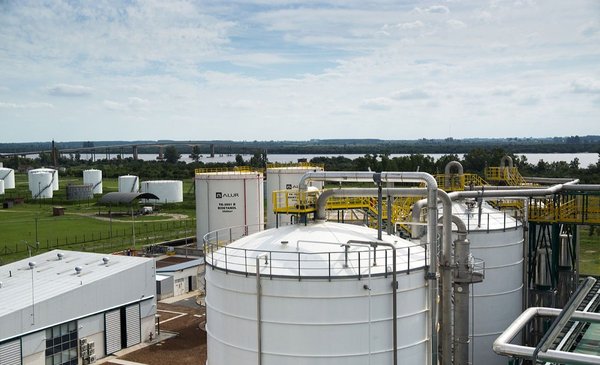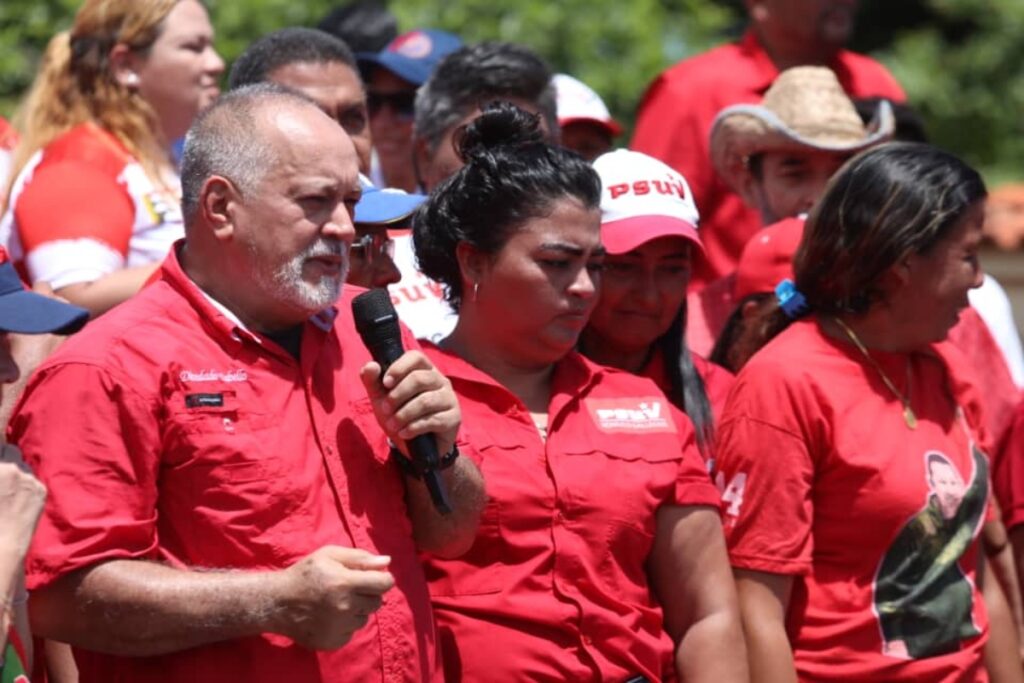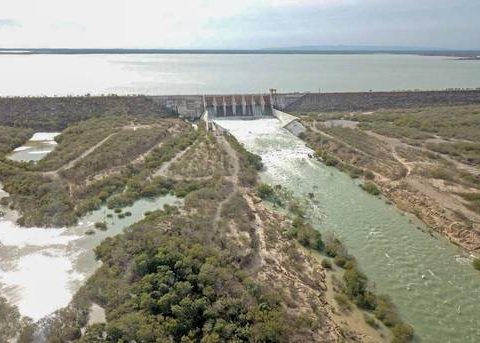This from the capture of CO2 of biogenic origin from the combustion of biomass and distillation of cereal alcohol, and from the production of green hydrogen. The planned investment is $4 billionthe largest in the country’s history.
This note presents some key points of the entrepreneurship and the e-fuels business, which is beginning to take its first steps in the world and is already looking towards Uruguay.
1-) What are e-fuels and how are they manufactured?
E-fuels are synthetic fuels produced from green hydrogen (H2) and carbon dioxide (CO2), which can be used as a substitute for fossil fuels. For the production of these carbon neutral fuels it is necessary to combine green hydrogen and carbon dioxide.
Hydrogen is then combined with CO2 in a process called synthesis. This is how renewable methanol is obtained, which can be converted into other green fuels to be used as gasoline for cars or fuel for jets, for example.
2-) What amount of e-fuels is planned to be produced in Paysandú?
The investment in Paysandú plans to produce some 250 million liters per year of synthetic gasoline, from the capture of 710,000 tons per year of CO2.
The project will require an investment close to US$1,985 million for the CO2 capture plant, methanol production and synthetic gasoline completion, which will be located about 7 kilometers north of the capital of Sanducera.
In addition, it foresees the production of 100,000 tons of green hydrogen per year. For this, an alkaline electrolyser of 1 GW of power and own renewable energy generation sources will be installed, within a radius of up to 180 kilometers from the city of Paysandú.
3-) How much electrical energy will you use?
An investment of US$ 2,000 million for the installation of 2 GW of renewable electricity generation in the country, from wind and photovoltaic solar farms.
For reference, This generation capacity is greater than all the installed power of wind and solar energy that Uruguay has today. In the case of wind mills it reaches 1.5 GW, and solar energy is in the order of 0.3 GW.
The participation percentage that each of these two renewable sources will have in the venture will be part of the project’s engineering development, which is the next stage, he told The Observer the president of HIF Global, César Norton.
4-) How much water is needed and what source will be used?
The company indicated that the use of water in this type of project “is low”: about 25 liters of water per second (0.025 cubic meters per second). In this sense, Norton pointed out that they are “analyzing the different sources of fresh water available in the Paysandú area.”
If this figure is projected to the daily demand, it is 2.16 million liters, which is equivalent to a consumption of 2,160 cubic meters (m3) of water per day.
Other sources familiar with the project told The Observer that to produce the 100,000 tons of green hydrogen per year, water will be extracted from the Uruguay River, which will be treated with reverse osmosis equipment. That river has an average flow of about 3,000 cubic meters per second.
As explained, the characteristics of the project indicate that the volume of water that the undertaking would need would be approximately 100 liters per second (0.1 cubic meters per second). This would raise the daily demand to 8.64 million liters, which is equivalent to a consumption of 8,640 m3 of water per day. Even so, it is a low consumption, they indicated.
Another source consulted by The Observer He pointed out that the water that will be needed daily is 20 seconds with the Uruguay River at a minimum flow, that is, 400 cubic meters per second.
5-) Who will be the suppliers of biogenic CO2?
The company Alur (an Ancap subsidiary) will be one of the suppliers of the project and will sell the biogenic CO2 generated in its ethanol plant to HIF Global. That will be enough to cover a little more than 20% of the plant’s demand. It is expected to complement with sources of CO2 from biomass of agricultural and forestry origin, with whose potential suppliers negotiations are currently underway.
6-) To which markets do you plan to export?
Synthetic gasoline will be sold to European markets where the company HIF Global already has contracts for volumes much higher than those that will be manufactured in Uruguay, Ancap president Alejandro Stipanicic said at a press conference on Thursday.
“In the Old Continent, the discussion about incentives to face climate change is more developed and, therefore, subsidies are already being contemplated that make synthetic gasoline competitive. What we need is to scale up the production of these fuels and develop the market and make it possible for more countries and more cars to use these e-fuels, Norton said.
Being chemically equivalent to existing liquid fuels, they can be transported by current methods (pipelines, ships or trucks) without the need for modifications of any kind.
The president of HIB Global explained that today The production cost of e-fuels is high, but these prices will drop as technologies advance and production scales up.
“As with wind and photovoltaic farms, renewable energy was much more expensive than conventional energy. Today, on the other hand, the price has fallen and it is hardly conceivable to continue resorting to non-renewable sources. The same happens in the case of e-fuels: to the extent that the technologies are more massive, their price will be lower, with a key effect for the planet which is to stop CO2 emissions”, stated Norton.
😎 How compatible are they with existing motor technology?
The main strength is that this fuel can be used without the need for any modification to current combustion engines, and taking advantage of the existing infrastructure for conventional gasoline. In the future, this fuel can also be used in ships and planes.

AlLUR Paysandú
9-) What other projects does HIF Global have and what companies does it work with?
The company already operates a pilot plant called Haru Oni in Magallanes, Chile, which will initially produce 130,000 liters per year. It also plans to build a commercial-scale plant in Texas in the United States which bears the name of Matagorda, with a production of 750 million liters per year, and has another project in Australia which will produce 100 million liters per year. Today he works with companies such as Bechtel, Siemens, Porsche, Enel Green Power, Exxon Mobil, Haldor Topsoe, Baker Hughes and Gasco, among others.
Its integration is made up of 75% by AME (Chile), 12% Porsche, 12% EIG (United States), 1% Baker Hughes and 1% Gemstone Investments. El País reported on Friday
10-) Why was Uruguay chosen for the venture?
The company considers that in Uruguay there are favorable technical and market conditions for the development of this industry. These include affordable and low-cost renewable energy, abundant availability of CO2 sources, state incentives, and a stable legal framework.
11-) What participation will Ancap have?
Eventually Alur or the Ancap Group could participate in industrial development as a minority partner of the initiative. This will be decided once the final business is complete with the value of the assets contributed, the logistics, and the financial structure of the project. The oil entity offers its infrastructure for the storage and export of production by river. Participation as a partner could be up to 30%.
12-) How many jobs will the project generate?
The project expects to employ around 1,600 full-time employees during the construction stage (around 30 months), with peaks of 3,200 people. Then he will give work to 300 full-time people permanently for the operation.
The project has now moved to the feasibility analysis stage which will take between 3 and 4 months. There will also be a stage in which aspects of deadlines, detailed engineering, contracts, environmental and fiscal aspects, among others, must be defined. The construction stage could begin at the end of 2024.
















